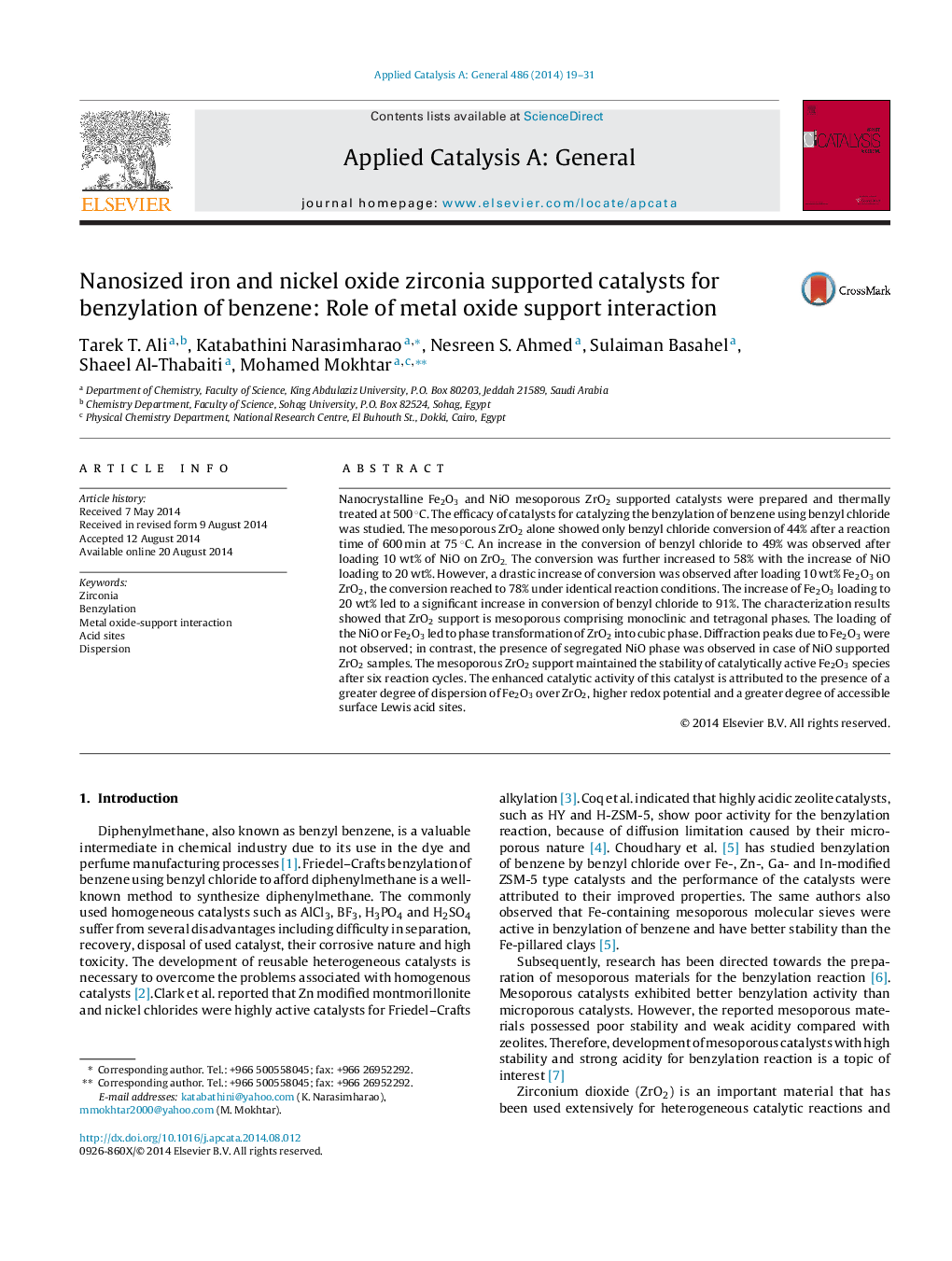| کد مقاله | کد نشریه | سال انتشار | مقاله انگلیسی | نسخه تمام متن |
|---|---|---|---|---|
| 39427 | 45823 | 2014 | 13 صفحه PDF | دانلود رایگان |
• Nanosized Fe2O3–ZrO2 and NiO–ZrO2 catalysts used for benzylation of benzene.
• Fe2O3–ZrO2 catalysts offered better catalytic performance than NiO–ZrO2.
• Fe2O3–ZrO2 showed high turnover rates and selectivity to diphenylmethane.
• Fe2O3–ZrO2 catalysts possessed more Lewis acid sites.
• Dispersed and stable Fe3+–O–Zr4+ species were catalytically more active.
Nanocrystalline Fe2O3 and NiO mesoporous ZrO2 supported catalysts were prepared and thermally treated at 500 °C. The efficacy of catalysts for catalyzing the benzylation of benzene using benzyl chloride was studied. The mesoporous ZrO2 alone showed only benzyl chloride conversion of 44% after a reaction time of 600 min at 75 °C. An increase in the conversion of benzyl chloride to 49% was observed after loading 10 wt% of NiO on ZrO2. The conversion was further increased to 58% with the increase of NiO loading to 20 wt%. However, a drastic increase of conversion was observed after loading 10 wt% Fe2O3 on ZrO2, the conversion reached to 78% under identical reaction conditions. The increase of Fe2O3 loading to 20 wt% led to a significant increase in conversion of benzyl chloride to 91%. The characterization results showed that ZrO2 support is mesoporous comprising monoclinic and tetragonal phases. The loading of the NiO or Fe2O3 led to phase transformation of ZrO2 into cubic phase. Diffraction peaks due to Fe2O3 were not observed; in contrast, the presence of segregated NiO phase was observed in case of NiO supported ZrO2 samples. The mesoporous ZrO2 support maintained the stability of catalytically active Fe2O3 species after six reaction cycles. The enhanced catalytic activity of this catalyst is attributed to the presence of a greater degree of dispersion of Fe2O3 over ZrO2, higher redox potential and a greater degree of accessible surface Lewis acid sites.
Figure optionsDownload high-quality image (140 K)Download as PowerPoint slide
Journal: Applied Catalysis A: General - Volume 486, 22 September 2014, Pages 19–31
